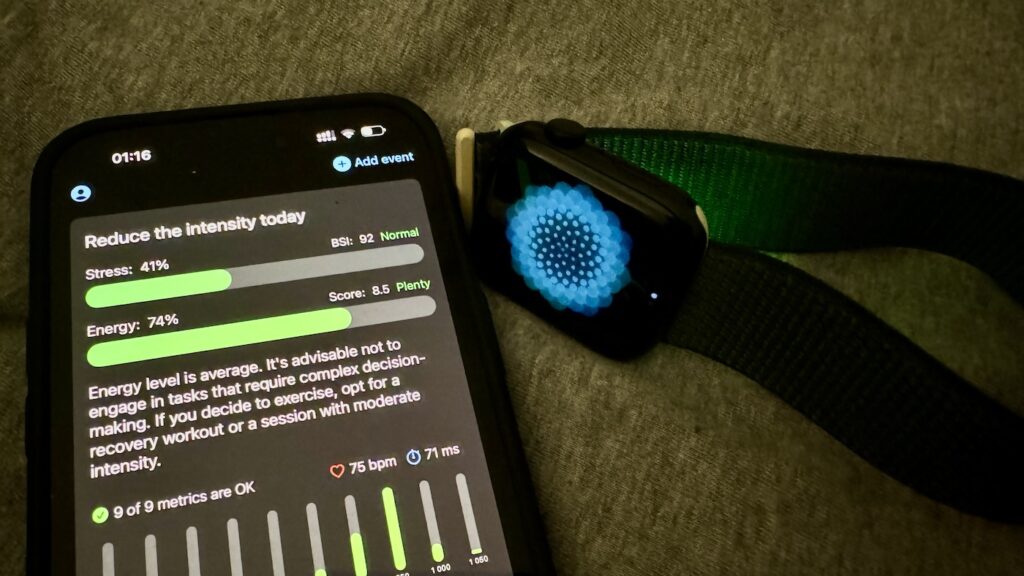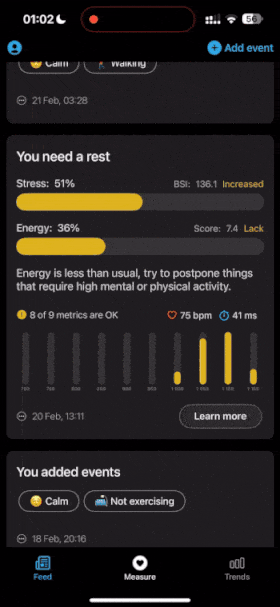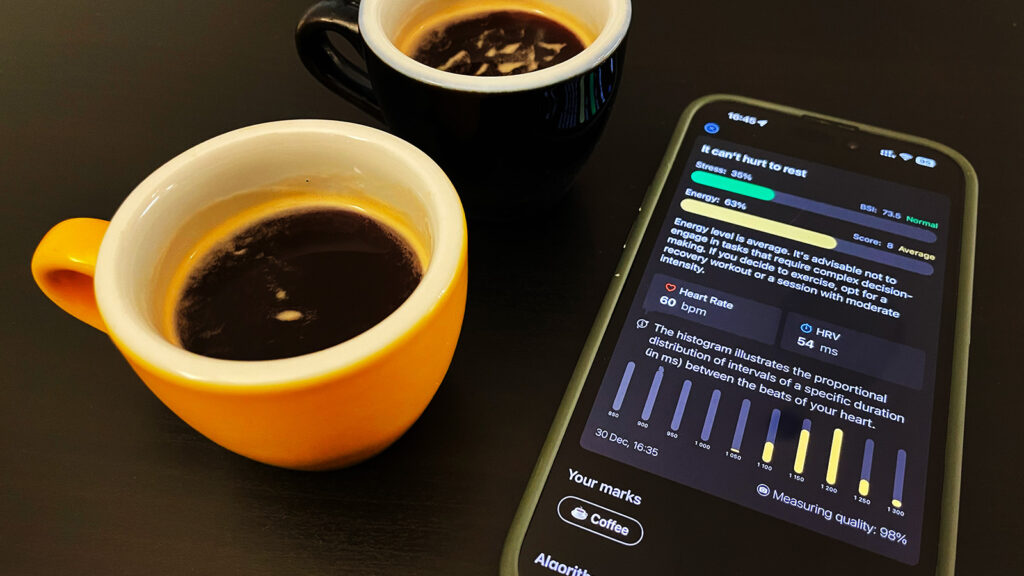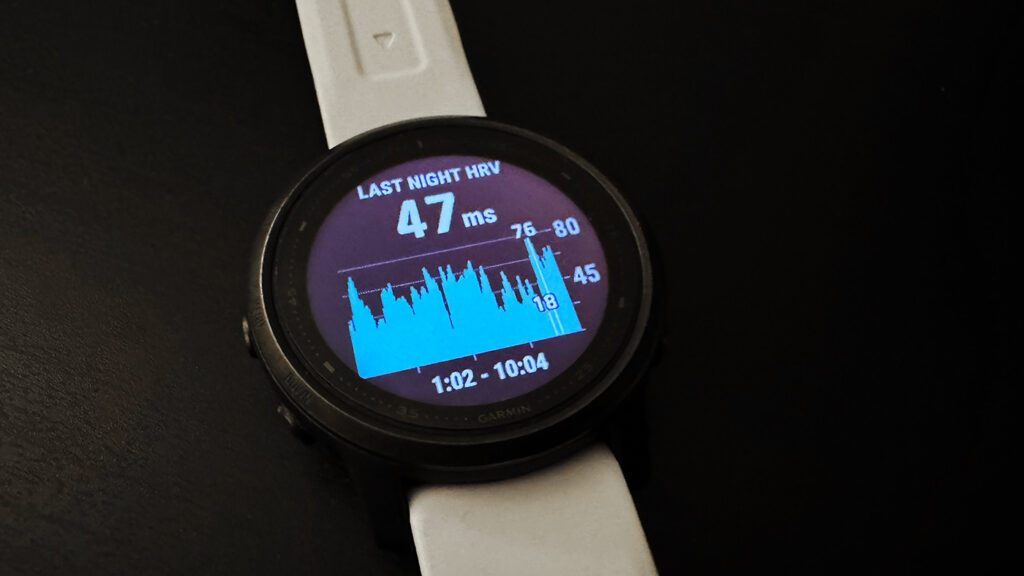What is stress and how does it work? There is a detailed article on stress on Wikipedia. In short, stress is the body’s reaction to unfavorable factors. Adrenaline and cortisol are released, and the sympathetic nervous system comes into action.

Stress is not always something bad. For example, according to the World Health Organization, a small amount of stress helps us cope with daily activities.
So, how can we gauge the level of stress we’re under, and more importantly, does stress aid us in dealing with problems, or does it instead hold us back by depleting our body’s resources in the struggle against it? The answer is clear: we need to measure stress!
How to measure stress?
As we already know, stress triggers the release of specific hormones and activates the sympathetic nervous system. So, the most accurate method would be a blood test for adrenaline and cortisol levels. However, as of the current time (2024), humanity does not yet possess the capability to quickly conduct such tests. There have been attempts, of course, but they have thus far been unsuccessful.
We are left to look for signs of activation of the sympathetic nervous system, which, for example, regulates the heartbeat. So, the most obvious sign of increased stress is an elevated heart rate. The heart begins to beat harder, preparing to supply blood to the muscles for fight or flight.
But is there a more accurate way to measure stress?
Doctor of Medical Sciences Roman Baevsky and the history of Soviet cosmonauts
Long ago, in those distant times when data from space was transmitted through narrow communication channels, scientists faced a challenge: how to convey information about the astronauts’ condition to the flight control center while transmitting as little data as possible.
Roman Baevsky proposed to assess the stress levels of cosmonauts using HRV and transmit it as a single number using a stress index. However, Baevsky was too clever to simply use RMSSD or SDNN, so he invented his own formula for calculating the stress index (no wonder he was the author of more than 500 scientific papers).
The value obtained when calculated using a specific formula is called the Baevsky Stress Index (BSI).
Apple Watch’s ability to measure stress
The Apple Watch can measure HRV right out of the box. Moreover, they continuously monitor your state and measure HRV at appropriate moments—when you’re not moving and are in a calm state. And everything would be fine, but there are two problems:
- They measure HRV when they deem it necessary, not when you want them to.
- The watches only calculate SDNN, which indirectly indicates the stress level. However, we want a more precise result using Baevsky’s formula, for which we need access to heart rate.
Making the Apple Watch measure stress
There is a workaround that allows access to heart rate intervals for further calculations. By running the Mindfulness app and the Breathe program, heart rate intervals will be saved in the Health Kit, from where they can be read and analyzed.
Simply launch the Mindfulness app in Breathe mode, set the timer for 3 minutes, and remain still to obtain a quality measurement. It’s important to ignore the breathing prompts, as breathing affects HRV (there’s a reason why it’s recommended to breathe rarely and deeply during stress, trust me).
Analyzing stress measured through the Apple Watch

The Wellhero app can access HealthKit on your iPhone, retrieve measurements through the Mindfulness program, and analyze them.
As a result, you receive both the calculation of the Baevsky Stress Index and a report on the functioning of the sympathetic and parasympathetic nervous systems, along with recommendations for training and recovery.
The present time provides us with incredible opportunities. The technology once available only to astronauts is now accessible to anyone. Instead of expensive equipment for measurements and analysis, all you need are a watch and a phone.

